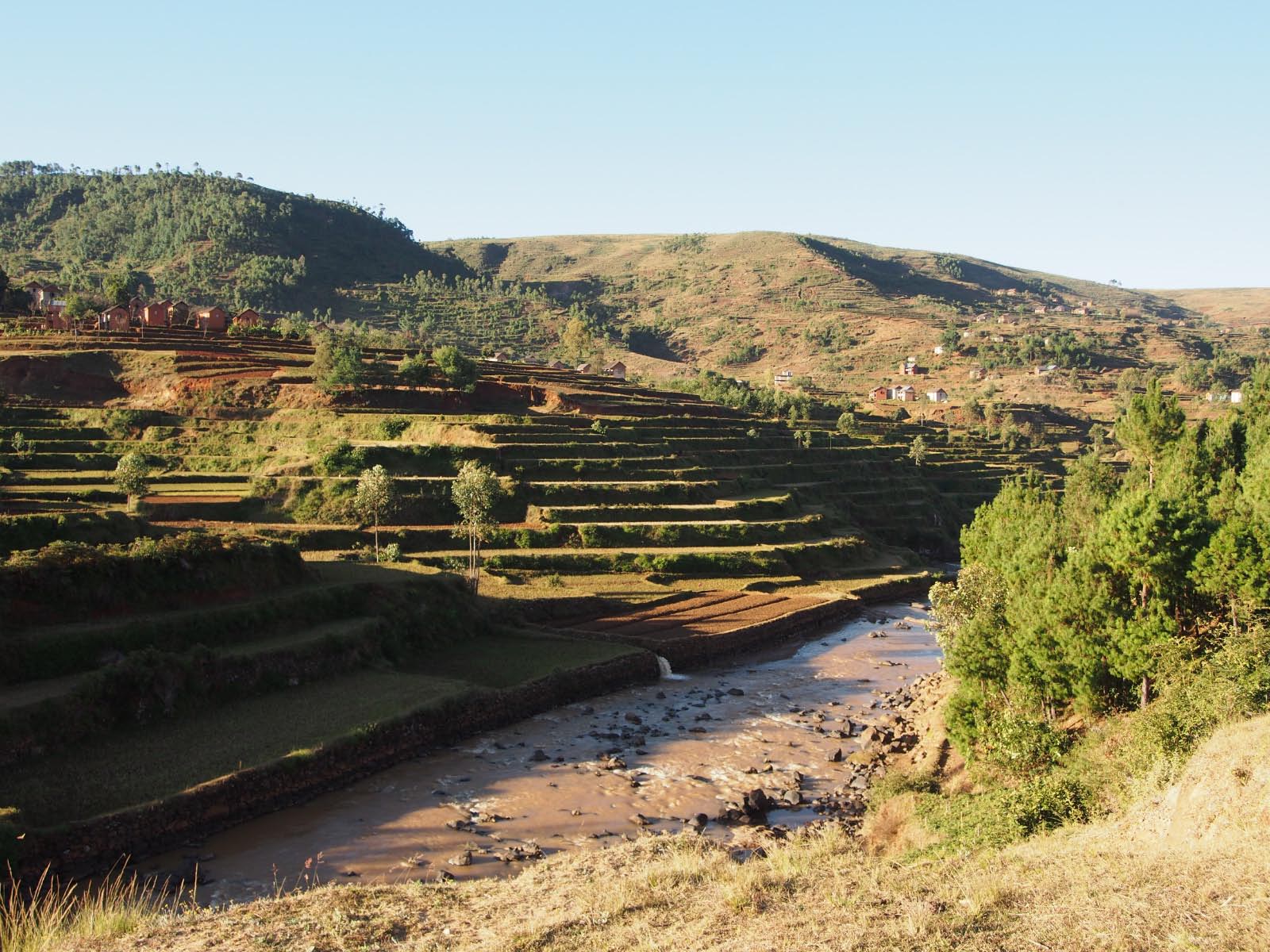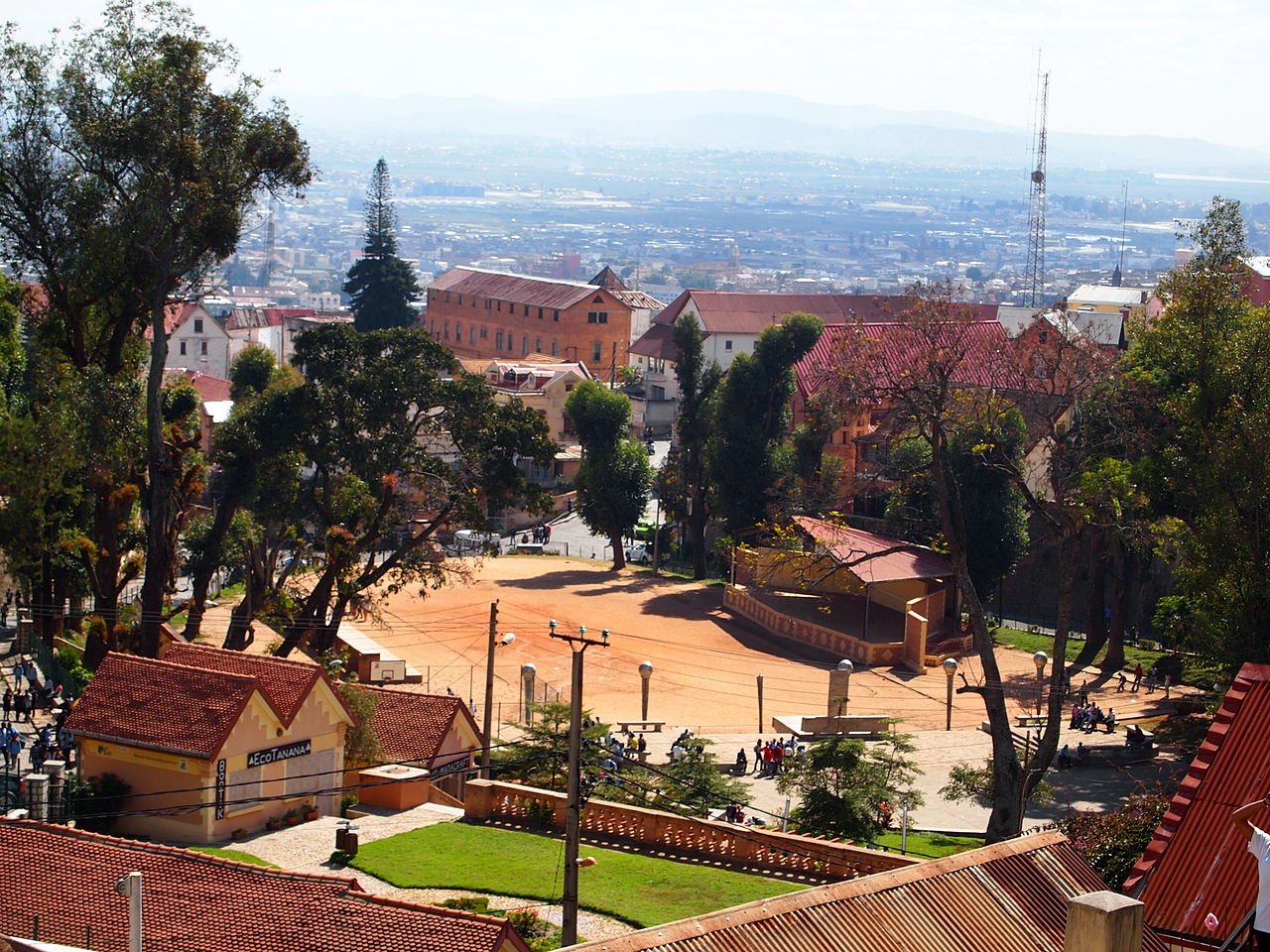While population estimates vary wildly, anthropologists and historians agree that highland Madagascar underwent a staggering explosion of population in the 17th and 18th centuries. According to the oldest available censuses, the density of Imerina was 8-16 times higher than other regions of the island. The explanation for this enormous growth can be partially explained with the emergence of extremely efficient wet rice cultivation techniques.  |
| Photograph of the Betsimitatra as viewed from the air. Notice the canals. Photo by Symonette Fanjanarivo |
In its natural state, highland Madagascar is entirely unable to support wet rice cultivation. While this technique of rice growth is more efficient, it is limited in its viability due to its high water costs. In Imerina, rainfall is abundant for a brief moment in the wet season, while almost entirely absent for the rest of the year. This means that, naturally, wet rice cultivation was too water intensive to last throughout these long dry spells.
 |
| An example of a dry (aka upland) rice field from Nepal |
Instead, early Merina farmers relied on dry rice cultivation techniques. This technique required less water, but relied on frequent fertilization with slash-and-burn agriculture, struggled to deal with weeds, and were vulnerable to locust swarms.
 |
| Malagasy locusts, one of the island's deadliest pests. Photo by Peter Prokosch |
The solution to these problems was wet rice cultivation, which choked out weeds and protected the rice from pests with an aquatic shield. Starting around the end of Andrianjaka's rule, Merina kings began to construct large scale infrastructure projects to make wet rice agriculture possible.
 |
| An example of terraced rice paddies and an irrigation canal in Imerina. |
Throughout the reigns of Andriantsitakaransria and his successor Andriantsimitoviaminandriandehibe, conscript labor from local hova demes were used to construct large canals, reservoirs, and flood control systems throughout the highlands surrounding Antananarivo. These new measures allowed Merina farmers access to a source of plentiful freshwater which did not rely exclusively on rainfall. The greatest of these achievements were the fields of Betsimitatra. This region, which had once been composed of stagnant wetlands, was transformed with the construction of a series of canals which extended the Ikopa river to run through its valleys. With a new source of agriculturally viable water, the swamps were transformed into Madagascar's most productive rice farms. While the country would remain a secondary power on the island for the coming centuries, the creation of this efficient network of food production was its first step towards becoming Madagascar's pre-eminent state.

















